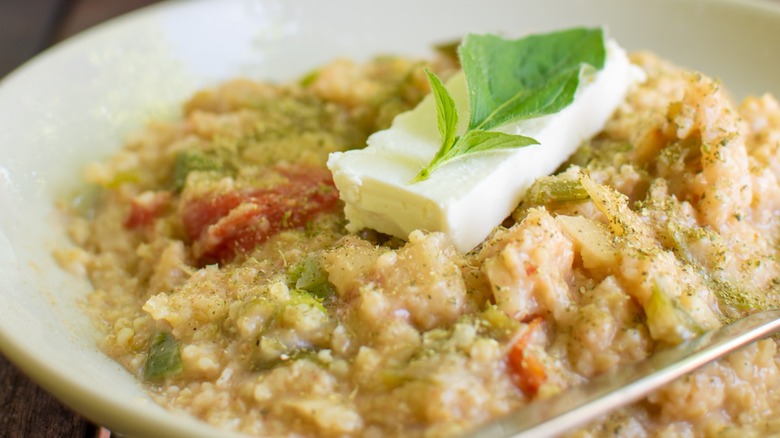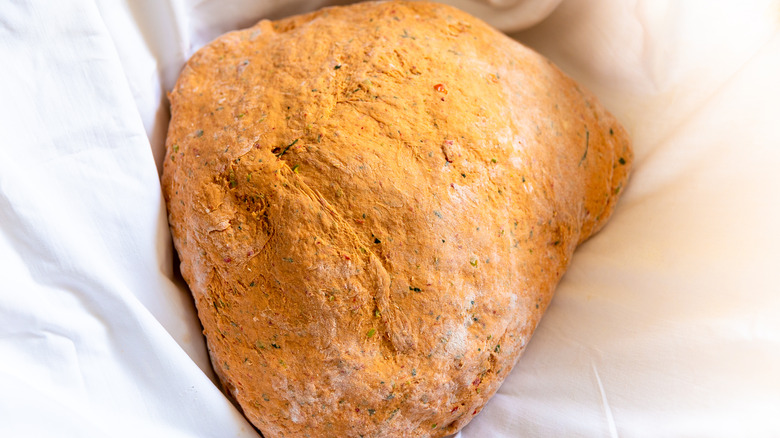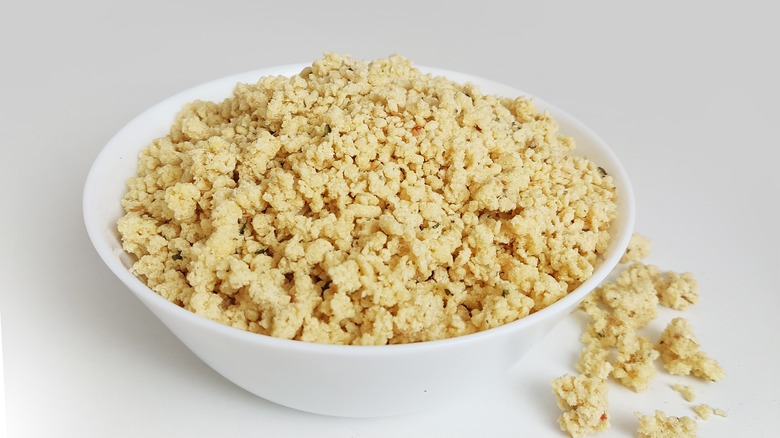Trahana: How One Of Greece's Oldest Foods Is Made
We may receive a commission on purchases made from links.
Grains are at the base of the food pyramid for a reason: They are fibrous and filling, and they often provide a variety of minerals and nutrients. When it comes to selecting a grain as the base of a pasta dish or buddha bowl, there are plenty of options, from pappardelle and orzo to quinoa and farro. But have you heard of trahana?
Trahana is an ancient Greek food that has earned itself a variety of nicknames over time, including the world's oldest fast-food and history's oldest instant soup. The small, pebble-like grain product has origins tracing back to ancient Greek and Roman times and is rumored to have fueled foot soldiers during conquests.
Today, trahana has many forms and can be found in Greece and other Mediterranean countries in a variety of both traditional and innovative dishes. While the grain is ancient, many modern chefs seem to be bringing trahana back in new recipes.
What exactly is trahana?
Trahana varies in Greece and may look different in different regions and preparations. Most forms involve combining a type of wheat with dairy into a large mass, allowing it to dry, and then breaking up the hardened mass into small, pebble-like pieces. When ready to serve, it is reheated with liquid, usually into a dish resembling porridge, grits, polenta, or soup. In ancient times without refrigeration, this was a way to preserve milk products for several months. Back then, trahana was usually made in August, when there was excess milk to use and enough heat to dry the wheat and dairy combination.
The wheat used in trahana is usually semolina, wheat flour, bulgur, or cracked wheat, and the dairy is usually milk, buttermilk, or yogurt. There are two main types of trahana — sour and sweet — based on the dairy product used. Sweet is made with whole milk or whole goat milk, and sour is made with buttermilk or yogurt.
How to buy and prepare trahana
Like homemade pasta, making your trahana from scratch can be an extensive, time-consuming process, but it's worth it if you are willing to put in the effort. Several recipes are available online, including this one from a Greek food blog that uses kibbled wheat and yogurt.
If you can't or don't want to make trahana, you can find packaged trahana at Greek supermarkets or shops in Greek villages. The different types available include coarse, fine, dairy-free, and flavored. You can also order trahana through online retailers, including Amazon.
Once you have trahana, there are many different recipes in which it can be used, such as a porridge with tomatoes and feta, a soup simmered with lemon and olive oil, or a Greek chicken one-pan dinner. Many recipes are easy to adapt and make your own, for example, by adding vegetables, protein, or other seasonings.


